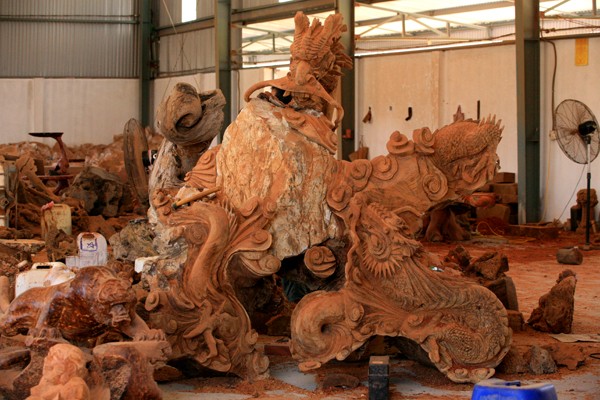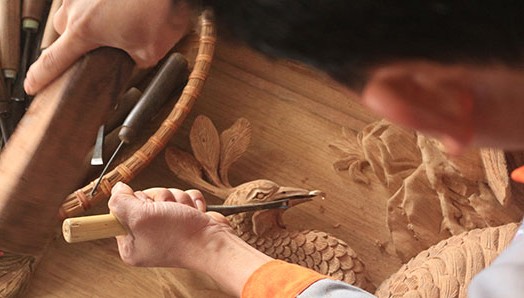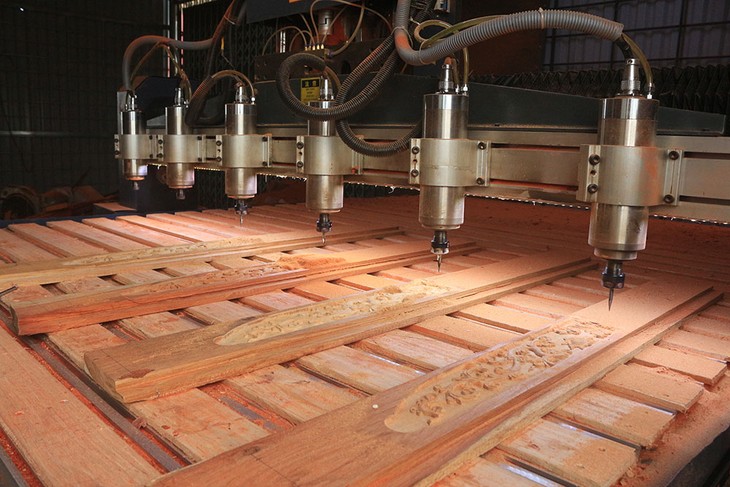(VOVWORLD) - Wood carving is a cultural heritage that has been passed down from one generation to another in Vietnam. Hand-carved products represent sophisticated features of the villages. Today, let’s go along to Dong Giao wood carving village in Hai Duong province.
 Dong Giao wood product (Photo: quehuongonline.vn) Dong Giao wood product (Photo: quehuongonline.vn) |
The 300-year-old Dong Giao village in Luong Dien commune is 45 kilometers east of Hanoi. On the entrance to the village, visitors can smell the wood and paint and hear bustling sounds of vehicles, chiseling, and sawing, all contributing to the strikingly different impression Dong Giao makes compared to the tranquility that is often associated with a rural town.
According to village records, the wood carving craft began in the 17th century. The forefather of the craft was a man of Vu clan, of which many served as mandarins to the feudal dynasties. The Vu clan also had skilled carvers who were sent to Hue, the former capital of Vietnam, to serve the royals, spreading the fame of Dong Giao craftmen.
 Each product is intricately carved (Photo: quehuongonline.vn) Each product is intricately carved (Photo: quehuongonline.vn) |
Artisan Vu Van Bang said: “Carvers from other handicraft villages across Vietnam cannot produce flower patterns on wood as beautiful as Dong Giao villagers do. We have been able to refine such techniques because the aesthetic values of wood carving are absorbed by the inhabitants of Dong Giao at a very young age. Patience and passion are typical characteristics of Dong Giao carvers, who work effortlessly to win the confidence and appreciation of their customers”
Dong Giao wood carving village used to excel at producing objects of worship and ritual furniture such as thrones, incense tables, couches, and statues. Nowadays, customers are in more favor of decorative items, including the three statues of happiness, prosperity, and longevity, the Maitreya, and animals representing happiness and luck. The carving process demands considerable sophistication, dexterity, and attention to such minute details as how to arrange the wood grains. The products embrace not only individual creativity but also the cultural traditions of Dong Giao village.
 Technology is applied to make high-quality products in Dong Giao village (Photo: quehuongonline.vn) Technology is applied to make high-quality products in Dong Giao village (Photo: quehuongonline.vn) |
Vu Duc Quang, one of the most skilled carvers, received his official education at an arts university and has used advanced technology to endow his works with unique contemporary features. Each of his carved wooden chrysanthemums is as vivid as the real thing. Quang told VOV: “When I work on a piece, I have to spend time imagining how it would be like and thinking about each small detail to make my work look as real as possible, so that viewers will be able to distinguish young and old leaves, young and old birds, a bird feeding its babies and a bird preening its feather. That’s the way I instill a sense of soul into each piece of wood.”
Dong Giao products have been exported to overseas markets, including China, Europe, and ASEAN, helping to generate greater income for locals and introduce Vietnamese artisanal works to a wider public. Thanks to wood carving, Dong Giao village is the wealthiest among the 11 villages in Luong Dien commune.